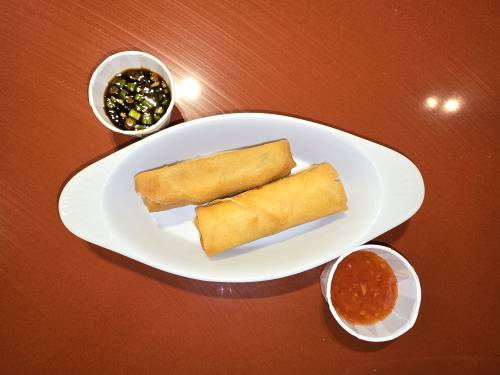
FAQ About Influence of Asian Cuisine on Western Culinary Arts

What are some examples of Asian ingredients commonly used in Western cuisine?
Asian ingredients like soy sauce, miso, ginger, garlic, sesame oil, wasabi, lemongrass, and coconut milk have been integrated into Western cooking. These ingredients are valued for their unique flavors and versatility, enhancing dishes ranging from marinades and sauces to soups and desserts.

How has the cooking technique of stir-frying influenced Western cuisine?
Stir-frying, a popular method in Asian cooking, has influenced Western cuisine by introducing a quick, energy-efficient way to cook that retains the freshness of ingredients. This technique allows for a variety of ingredients to be cooked rapidly at high heat, preserving nutrients and flavors, which appeals to health-conscious consumers and busy cooks alike.

What is the role of fusion cuisine in combining Asian and Western culinary traditions?
Fusion cuisine plays a pivotal role by blending Asian and Western culinary traditions to create innovative dishes that appeal to a global palate. This culinary trend involves combining techniques, flavors, and dishes from different cultures, leading to unique offerings like sushi burgers or kimchi tacos, which celebrate diversity and creativity in food.

How has sushi impacted Western food culture?
Sushi has had a significant impact on Western food culture, becoming a popular and trendy dining option. Its rise has led to an increase in awareness and appreciation of raw fish dishes, and has also inspired Western adaptations such as sushi rolls with non-traditional ingredients like cream cheese and avocado.

What is the significance of soy sauce in Western culinary practices?
Soy sauce, a staple in Asian cuisine, has become a critical ingredient in Western kitchens due to its rich umami flavor. It is used to enhance the taste of marinades, dressings, sauces, and stir-fries, and serves as an excellent seasoning alternative for those looking to reduce sodium intake from salt.

Why are ramen dishes gaining popularity in the West?
Ramen dishes have become increasingly popular in the West due to their comforting, hearty nature and the flexibility of customization. The rise of ramen establishments and the dish's presence in food media have acquainted Western consumers with its diverse variations, from traditional pork-based broths to vegan and creative fusion options.

In what ways has Asian street food influenced Western dining experiences?
Asian street food has influenced Western dining through the introduction of dishes such as bao buns, satay, boba tea, and banh mi to casual dining settings. The street food trend has encouraged Western chefs to experiment with bold, dynamic flavors and informal dining experiences that focus on quality and authenticity.

How are Asian cooking methods like steaming and fermenting applied in Western cuisine?
Asian cooking methods like steaming and fermenting have been adopted in Western culinary practices due to their health benefits and flavor enhancement. Steaming preserves nutrients and maintains the natural taste of ingredients, while fermenting adds complex flavors and probiotics, as seen in foods like kimchi and miso paste.

What are some common Asian spices influencing Western dishes?
Asian spices such as curry, cardamom, turmeric, Sichuan pepper, and star anise have increasingly been used in Western dishes for their distinctive flavors and aromas. These spices are incorporated into both traditional and modern recipes, offering new taste profiles in soups, sauces, baked goods, and beverages.

How has the concept of 'umami' from Asian cuisine influenced Western taste preferences?
The concept of 'umami,' known as the fifth taste, originating from Asian culinary practice, has greatly influenced Western taste preferences by emphasizing flavor depth and richness. Ingredients like soy sauce, mushrooms, and tomatoes, which provide umami, are now commonly used for their ability to enhance and round out flavors in various dishes.

What is the influence of Asian desserts on Western culinary arts?
Asian desserts such as mochi, matcha-flavored treats, and bubble tea have made their way into Western markets, inspiring new interpretations and adaptations. The use of Asian flavors like green tea, red bean, and sesame in Western-style cakes, pastries, and ice creams reflects this cross-cultural culinary exchange.

How have Asian noodle dishes been integrated into Western cuisine?
Asian noodle dishes like pad thai, pho, and lo mein have found a place in Western diets, appreciated for their complex flavors and comforting nature. Western cooks often adapt these dishes with locally available meats and vegetables, creating new interpretations that maintain the essence of the traditional recipes.

Why is fusion cuisine sometimes controversial?
Fusion cuisine can be controversial as it is seen by some as diluting traditional recipes and undermining culinary authenticity. Critics argue that merging cuisines without a deep understanding of the cultural context can result in inappropriate combinations that fail to respect the original culinary art.

What impact has Chinese food had on Western culinary habits?
Chinese food has significantly impacted Western culinary habits, with dishes like stir-fry, fried rice, and sweet and sour pork becoming staples in many households. The popularity of Chinese takeout and the presence of Chinese restaurants have introduced broader flavor profiles and cooking techniques to Western audiences.

How has the popularity of Asian cooking shows influenced Western gastronomy?
Asian cooking shows have captivated Western audiences, leading to greater interest in and experimentation with Asian ingredients and techniques. These shows often highlight cooking methods and flavors unfamiliar to Western viewers, inspiring them to try new recipes and appreciate the cultural significance behind the dishes.

Are there any health trends in Western cuisine influenced by Asian dietary practices?
Western cuisine has embraced several health trends inspired by Asian dietary practices, such as the inclusion of plant-based foods, fermented products for gut health, and the use of tofu and soy products as protein alternatives. Additionally, Asian-inspired eating patterns that emphasize balance and variety appeal to health-conscious individuals.

What role does rice play in the fusion of Asian and Western cuisines?
Rice is a fundamental staple in both Asian and Western fusion cuisines. It serves as a versatile base that complements various dishes, from traditional recipes to innovative renditions that incorporate global flavors, such as rice bowls with cross-cultural toppings or risotto dishes infused with Asian spices.

How has the introduction of Asian condiments changed Western culinary landscapes?
Asian condiments like sriracha, hoisin sauce, and fish sauce have become mainstream in Western culinary landscapes, adding depth and complexity to many dishes. These condiments are not only used in traditional Asian recipes but have also become popular flavor enhancers for salads, sandwiches, and grilled meats.

What challenges do chefs face when merging Asian and Western culinary styles?
Chefs face several challenges when merging Asian and Western culinary styles, including achieving a harmonious balance of flavors, maintaining cultural respect and authenticity, and meeting diverse customer expectations. It requires a deep understanding of both cuisines to successfully create dishes that are innovative yet respectful to their origins.

How has the adoption of Asian beverages impacted Western dining culture?
Asian beverages like matcha, sake, and bubble tea have enriched Western dining culture, offering new drinking experiences and flavor profiles. These drinks have gained popularity not only for their unique tastes but also for their health benefits, leading to their integration into both casual and upscale dining establishments.
